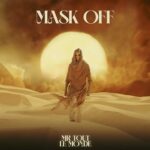Getting its start in the late 1990s, the Mushishi franchise went from manga to low-key hit multimedia franchise all the way into the 2010s. This was when it finally received its anime adaptation, bringing more awareness to the property and its rather unique take on both fantasy and "historical fiction" storytelling. It's the latter point that is also the most mysterious concerning the series.
Mushishi takes place in a sometimes confusing time period, and it's only made more perplexing given the main character's choice of clothes. This is explainable somewhat in the initial plans behind the series, although the exact time period still isn't quite so easy to explain. Here's exactly when Mushishi takes place in relation to different historical Japanese time periods.
What Is Mushishi About?
Beginning as a manga back in 1999, Mushishi was created by Yuki Urushibara. The world of the series is one filled with primitive spiritual monsters known as Mushi. Due to their nature, most humans can not physically see or interact with Mushi, although their lives can still be affected by them, many times for the worse. One of the few humans who can perceive them is the series' protagonist Ginko. Due to this power, he wanders the land and sells his powers as a service, helping people deal with Mushi-related problems.
Mushishi has no overarching storyline and is purely episodic in nature, giving it a somewhat easygoing tone. This is why the supernatural series is also characterized as an iyashikei story -- a genre that's known for its laid-back and relaxing slice-of-life scope, with many of the stories being rural and naturalistic in setting. Beyond the paranormal Mushi, Mushishi otherwise feels like a throwback to a specific Japanese historical era. Of course, figuring out said era has long been the hard part.
When Does Mushishi Take Place?
Mushishi is meant to represent a sort of amalgam time period that combines both the Edo period -- which was from 1603 to 1867 -- and the Meiji period, which took place from 1868 to 1912. Although the general feel definitely embodies different aspects of these time periods, there are also various elements that contradict them and keep Mushishi from cleanly fitting into either. For instance, the latter period was when Japan began to become slightly less isolationist in regard to much of the rest of the world, namely the West. This is why Ginko's clothes are pretty much entirely Westernized, such as his button-up shirt and jacket. However, the series portrays Japan as a fairly closed society, contradicting many historical facts.
The fact that Ginko somehow has "gaijin" clothes in a closed Japan is even weirder given the iyashikei subgenre, as the rural setting of the stories clashes with the protagonist's relatively "cosmopolitan" wardrobe. Again, this is all explained away by the series being in a fictional time period, not to mention the fact that Urushibara originally planned for it to be a more modern story. Given the scope and tone of things, perhaps it's best to simply ignore any historical inaccuracies and enjoy the mellow storytelling. To do so, viewers can stream Mushishi on Tubi TV, Funimation or Hulu.
About The Author

